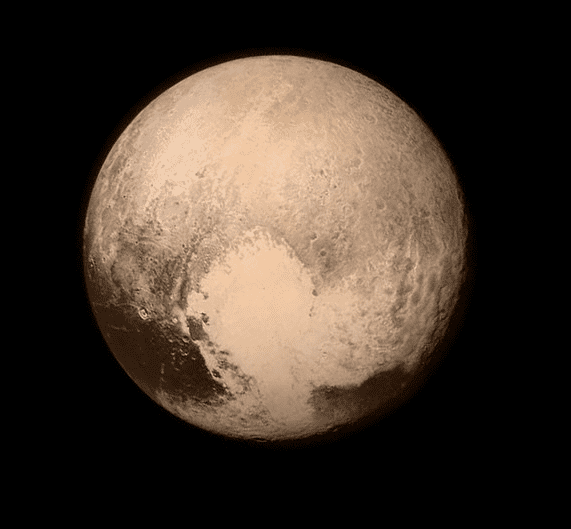We’ve learned a lot from New Horizons’ flybys of Pluto, such as confirming it has an active geology, a climate, and almost certainly many more secrets waiting to be found. One of them might be an ocean of liquid water buried beneath Pluto’s thick nitrogen ice surface.
When New Horizons beamed back its best photos of the dwarf planet, it also showed to the world the largest geological feature on Pluto — a bright, heart-shaped Tombaugh Regio. In the western part of ‘the heart’ as it’s also called, lies the Sputnik Planum lobe, which is a 1000-km-wide plain of nitrogen and other ices.
Evidence suggests that Sputnik Planum was created by a giant impact with a cosmic body at least 200 kilometers across. Subsequently, this cataclysmic event should have displaced enough material to cause a negative gravitational anomaly because a crater is nothing but a big hole in the ground — less mass means less gravitational pull. At least, that’s what ought to have happened.
Instead, Sputnik Planum bears a positive gravitational anomaly which means something is filling that crater, and a team from Brown University think it’s liquid water.
“Thermal models of Pluto’s interior and tectonic evidence found on the surface suggest that an ocean may exist, but it’s not easy to infer its size or anything else about it,” said Brandon Johnson, who is an assistant professor in Brown’s Department of Earth, Environmental and Planetary Sciences. “We’ve been able to put some constraints on its thickness and get some clues about composition.”
Like Earth and the Moon, Pluto and its largest moon Charon are tidally locked, meaning the two always show the same face as they rotate. This happened over time and as Charon’s gravity pulled proportionately more on areas of higher mass, the two bodies became aligned on a tidal axis. Sputnik Planum sits directly on this tidal axis.
After the impact, the massive crater could have been filled with nitrogen with ice progressively layering on top of each other. But that couldn’t have been enough to cause the positive gravitational anomaly. Instead, what the Brown University researchers think happened was that liquid water, which is denser than ice, upwelled following the impact and evened the crater’s mass. Then, the nitrogen ice deposited on top of this liquid water would have been enough to explain the positive gravitational anomaly.
“This scenario requires a liquid ocean,” Johnson said. “We wanted to run computer models of the impact to see if this is something that would actually happen. What we found is that the production of a positive mass anomaly is actually quite sensitive to how thick the ocean layer is. It’s also sensitive to how salty the ocean is, because the salt content affects the density of the water.”
The computer models suggest this tentative layer of liquid ocean ought to be more than 100 kilometers thick, with a salinity of around 30 percent, as reported in Geophysical Research Letters.
“What this tells us is that if Sputnik Planum is indeed a positive mass anomaly —and it appears as though it is — this ocean layer of at least 100 kilometers has to be there,” Johnson said. “It’s pretty amazing to me that you have this body so far out in the solar system that still may have liquid water.”










